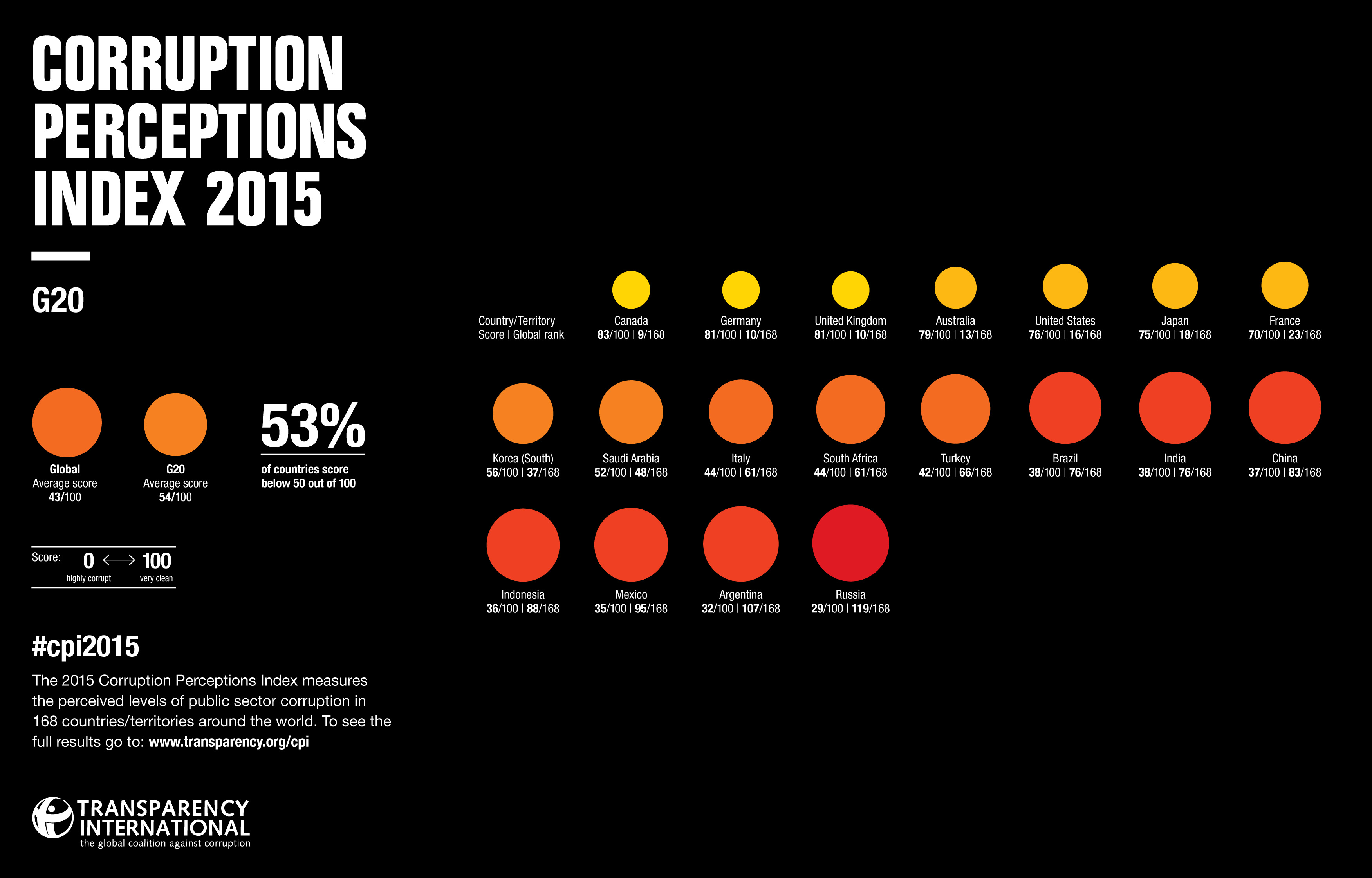Transparency International: Corruption still high but 2015 saw signs of hope
Although corruption levels are still high globally, more countries improved their scores in the 2015 edition of Transparency International’s Corruption Perceptions Index. Overall, two-thirds of the 168 countries on the 2015 index scored below 50, on a scale from 0 (perceived to be highly corrupt) to 100 (perceived to be very clean).
Yet in places like Guatemala, Sri Lanka and Ghana citizen activists in groups and on their own worked hard to drive out the corrupt, sending a strong message that should encourage others to take decisive action in 2016. “Corruption can be beaten if we work together. To stamp out the abuse of power, bribery and shed light on secret deals, citizens must together tell their governments they have had enough. The 2015 Corruption Perceptions Index clearly shows that corruption remains a blight around the world. But 2015 was also a year when people again took to the streets to protest corruption. People across the globe sent a strong signal to those in power: it is time to tackle grand corruption”, said José Ugaz, Chair of Transparency International.
Grand corruption is the abuse of high-level power that benefits the few at the expense of the many, and causes serious and widespread harm to individuals and society. It often goes unpunished. This year Transparency International is calling on all people to take action by voting at unmaskthecorrupt.org.
Brazil was the biggest decliner in the index, falling 5 points and dropping 7 positions to a rank of 76. The unfolding Petrobras scandal brought people into the streets in 2015 and the start of judicial process may help Brazil stop corruption. Denmark took the top spot for the 2nd year running, with North Korea and Somalia the worst performers, scoring just 8 points each.
Top performers share key characteristics: high levels of press freedom; access to budget information so the public knows where money comes from and how it is spent; high levels of integrity among people in power; judiciaries that don’t differentiate between rich and poor, and that are truly independent from other parts of government.
In additio, conflict and war, poor governance, weak public institutions like police and the judiciary, and a lack of independence in the media characterise the lowest ranked countries.
The big decliners in the past 4 years include Libya, Australia, Brazil, Spain and Turkey. The big improvers include Greece, Senegal and UK.
The Corruption Perceptions Index is based on expert opinions of public sector corruption. Countries’ scores can be helped by open government where the public can hold leaders to account, while a poor score is a sign of prevalent bribery, lack of punishment for corruption and public institutions that don’t respond to citizens’ needs. The index covers perceptions of public sector corruption in 168 countries.
Transparency International is the global civil society organisation leading the fight against corruption.
SOURCE: Transparency International




